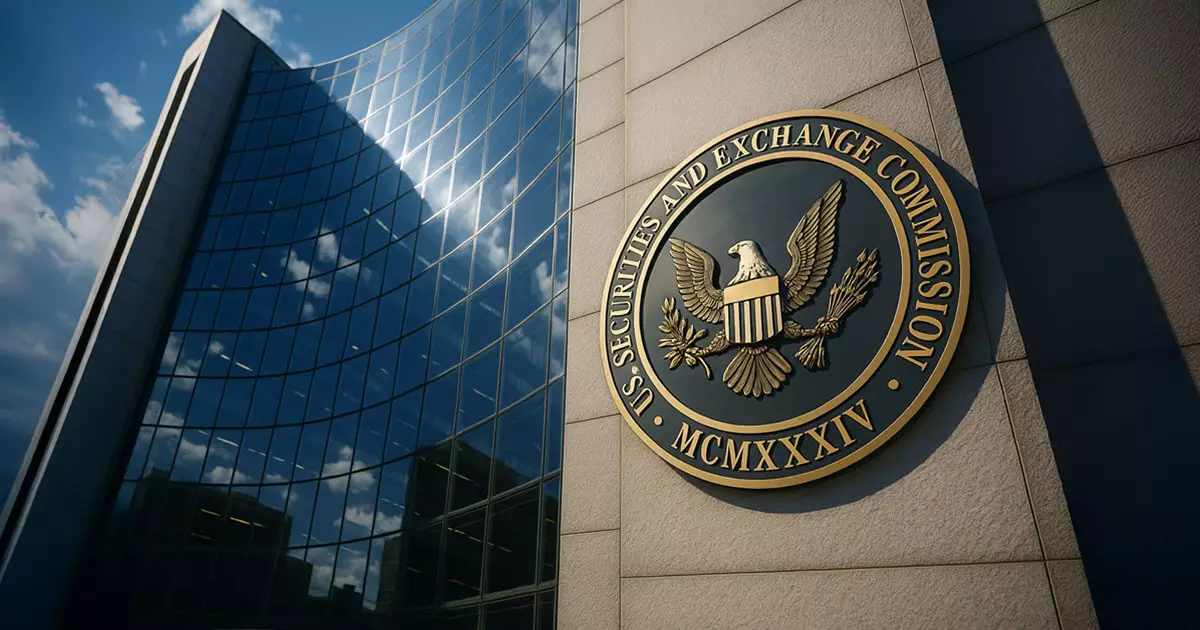The recent guidance issued by the US Securities and Exchange Commission (SEC) on May 15 is a pivotal moment for the institutional adoption of digital assets. However, skepticism looms over whether this guidance genuinely represents the leap forward that cryptocurrency advocates have long awaited or if it merely touches the surface of a much deeper regulatory dilemma. SEC Commissioner Hester Peirce described the guidance as “incremental, not comprehensive,” a phrase that rings alarm bells for those hoping for substantial systemic change. Incrementalism may be the policy of the day, but history has shown that without bold strides, the transformative potential of digital assets could be delayed indefinitely.
Chainlink: The Unsung Hero of Compliance
One of the noteworthy features of this guidance is Chainlink’s involvement. The company, known for its decentralized oracles that connect smart contracts with real-world data, has been instrumental in shaping the SEC’s policy vision. As the agency explores the boundaries of how public blockchains can comply with existing securities regulations, Chainlink steps up as the middleman, facilitating dialogue between private enterprise and regulatory bodies. Holding a series of closed-door meetings with the SEC Crypto Task Force, Chainlink’s legal delegation showcased innovative workflows that prioritized both compliance and efficiency. This raises a vital question: will we rely too heavily on a single player like Chainlink to guide the narrative of digital assets, or can we reasonably expect a diverse ecosystem of innovators contributing to the conversation?
Clarifying Custody Considerations
The SEC’s latest guidance clarifies the unique treatment of different types of digital assets regarding custody obligations. It’s a significant development that broker-dealers are no longer subject to the same customer protection rules for non-security crypto, such as Bitcoin and Ethereum. On the one hand, this can facilitate a more dynamic trading environment where institutions can take calculated risks without the stringent overhead often associated with traditional securities. However, this also increases the onus on investors to understand and evaluate the inherent risks involved. The absence of protections under the Securities Investor Protection Act (SIPA) for non-security crypto could leave unwary participants exposed to losses that they could otherwise avoid. This dichotomy prompts a need for greater investor education surrounding the use of digital assets within a regulatory framework that’s still maturing.
Transfer Agents Embrace Distributed Ledger Technology
The SEC’s guidance goes beyond broker-dealers to encompass transfer agents, allowing them to explore the application of Distributed Ledger Technology (DLT) for maintaining securities records. By approving the usage of public blockchains as official Master Securityholder Files, the SEC is acknowledging the potential efficiency gains available through technological adoption. This regulatory acceptance could revolutionize the $132 trillion global fund-administration market by facilitating seamless records management and potentially lowering costs. However, caution must prevail. Just because the SEC gives the green light doesn’t mean every transfer agent has the expertise to protect vital records within this new paradigm. Will the adoption of DLT end up being a rushed affair, or can we expect a carefully measured approach aligned with sufficient risk assessments?
Bitcoin and Ethereum: The Settling Standards
While the SEC highlights Bitcoin and Ethereum as the primary focus of this guidance, it also subtly implies that broker-dealers have the latitude to hold–or trade–other digital assets. This is a bit of a double-edged sword. On the one hand, embracing a diverse digital asset portfolio can incentivize innovation and expand the crypto marketplace; on the other, establishing a hierarchy unintentionally reinforces a ‘sacred asset’ mentality around BTC and ETH. As the digital asset space evolves, it’s crucial for regulators to ensure that innovation is not stymied by high entry barriers for other promising digital tokens that can serve material utility.
The Path Forward: Regulatory Empowerment and Responsibility
Ultimately, the SEC’s recent guidance demonstrates a willingness to engage with digital innovation while attempting to maintain a stable regulatory environment. Though there remains a sense of caution, what we are witnessing is an incremental step toward broader acceptance of digital assets within regulated financial frameworks. This delicate balance between embracing new technology and hedging risks will define the future landscape. It’s now up to industry players—including Chainlink and others—to leverage these guidelines for institutional onboarding while demanding a more comprehensive regulatory framework that benefits all stakeholders. Without collective action and advocacy for robust regulations, we risk stagnating the very innovation that makes this space enticing.















Leave a Reply